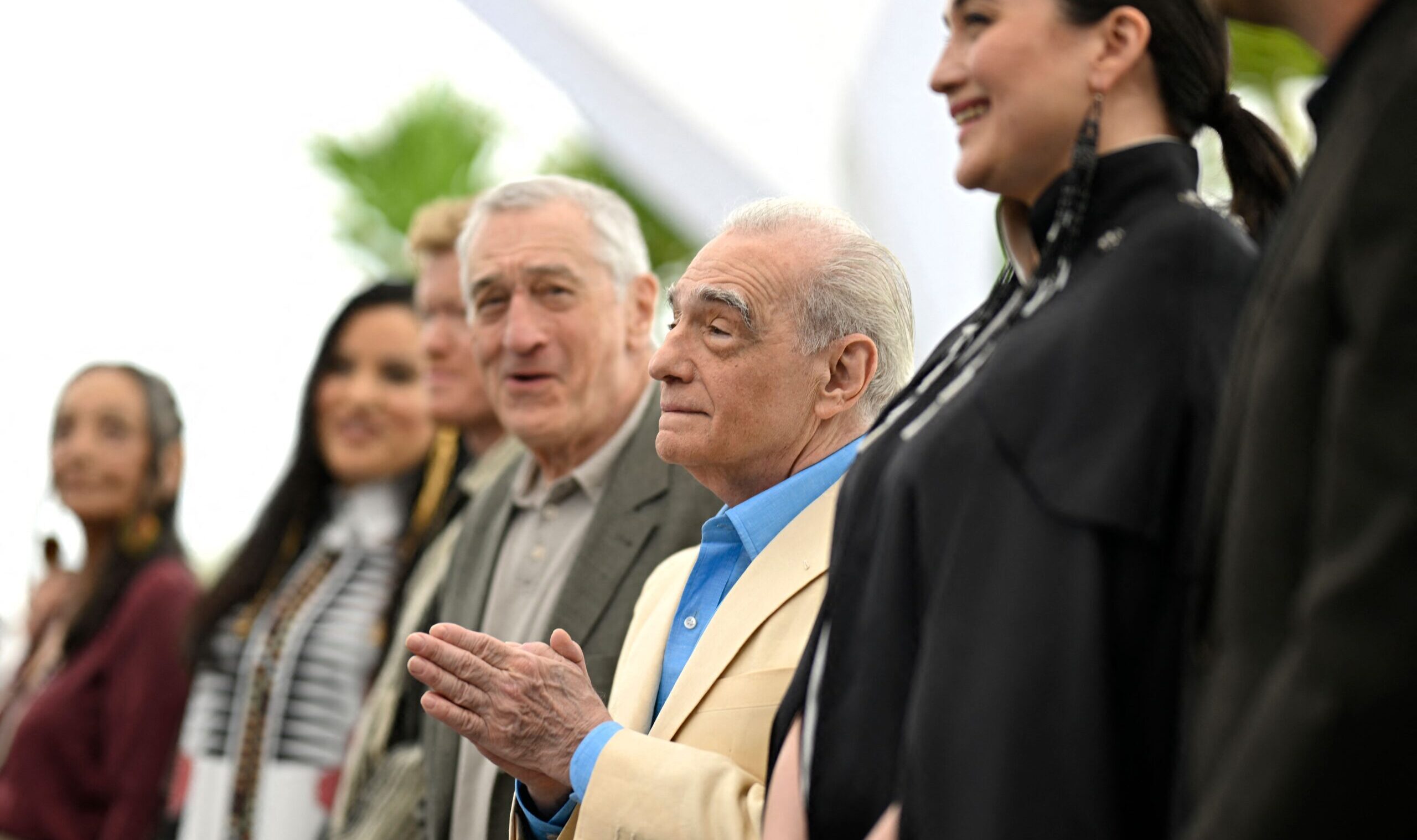A Little Race War
Martin Scorsese’s Killers of the Flower Moon says the usual things about America’s racial demons, and says some of them well.

Martin Scorsese in his old age has pulled off a remarkable feat: He has crafted a 206-minute movie about the Osage Nation that does not include a single Osage character. Killers of the Flower Moon has some Osage set dressing, to be sure. Lily Gladstone as Mollie Burkhart must be among the film’s most expensive props. This is not her fault—she did as well as could be expected for a character written with about half a dimension. In her first scenes, Mollie shows some promise; Gladstone’s delivery is charmingly eccentric. But by the time the action starts, the heroine is a cigar-store Indian: stiff, unthinking, unfeeling, barely acting.
This is a prevailing theme throughout Scorsese’s latest work of racial reckoning. For all its pretense at progressive politics, Killers of the Flower Moon cannot seem even to comprehend its Indian subjects as people. Henry Roan, a depressed alcoholic who embodies all of the oldest red man tropes, is almost played for laughs. When the Osage strike oil and become (as the opening sequence notes) the richest people per capita in the world, they are all cartoonishly flashy with the money. With the almost notable exception of Mollie, the reservation women are played half as schemers, half as whores.
These are not the only caricatures in Killers of the Flower Moon. With its drama of racial animus, exploitation, and death, it barely even pretends to be about the Osage. The hamfisted insertion of a newsreel on the race riots in Tulsa insists to anyone who could have missed it that this movie is actually about the left-wing fixation on black–white conflict circa 2023. The incoherence of Scorsese’s allegory is obvious enough, though never explicitly admitted, in the film. So are its unpleasant implications. The film’s tribal chiefs admit that even the oil money is the white man’s money—that the myth of the prosperous and proud Osage is entirely dependent on the structure of civilization erected by white America. Had the Osage struck oil without the white man, they would have had a load of black goo, along with their straw huts and ritual pipes. There would have been no Buicks, no dollars, no tales of great betrayal.
If Killers of the Flower Moon were actually about the Indians, it would not have much reason for existing. As Armond White notes in National Review, there is already a vast and deep body of American cinema engaging with the history of the Indians, their wars, their conquest and afterlife. Any of these classics is more serious and sensitive in its treatment of the dynamic between the old and new nations than this newest installment. Scorsese must have known that he could not outdo The Searchers.
As art, though, Killers of the Flowers Moon is not quite as junky as White suggests. Leonardo DiCaprio’s turn as Ernest Burkhart is more interesting than he or other critics have admitted. Political readings cast Ernest as evil Whitey, a predator who has completely deceived Mollie in pursuit of her family’s fortune. An impartial viewer cannot glean this from the film as it exists. Ernest seems sincerely in love with Mollie; he participates in the brutal murders of her family despite this.
Subscribe Today
Get daily emails in your inbox
Maybe this is fiction. In real life, Ernest Burkhart was much more handsome and Mollie Burkhart much less so than their cinematic counterparts; it is hard to imagine them as an honest pairing. If it is fiction, it is good fiction—one of the few marks that make Scorsese’s moralizing still worth the three and a half hours it costs its viewers. On the whole, Killers is fairly good in spite of itself. It is about as good as a film can be so full of horrible acting, horrible writing, and horrible visuals.
But White is right that Killers is a fundamentally political film, and it ought to be analyzed on those terms. It is, as White argues, a simplistic allegory of twisted oppressors and infantile oppressed. It displays a kind of paternalistic, well-meaning racism that largely went out of style a few generations past. Like most 80-year-old New Yorkers, Scorsese may not have the most enlightened views on race by the standards of these latter days. If Killers of the Flower Moon is any indication, he views the warlike pagans of pre-America not just as noble savages, but as exceedingly simple ones. Somehow, still, he worships them.
This—not mere white self-hatred nor the American harmony of greed and rage—is the defining core of Scorsese’s racial gospel, which has evolved quite a bit since the days of Taxi Driver. It is not guilt, white or otherwise, that has the director obsessed. It is innocence. The clash of its imagined embodiment with the realities of the world and its peoples causes Killers of the Flower Moon to collapse in on itself. It may do the same off screen.
Comments